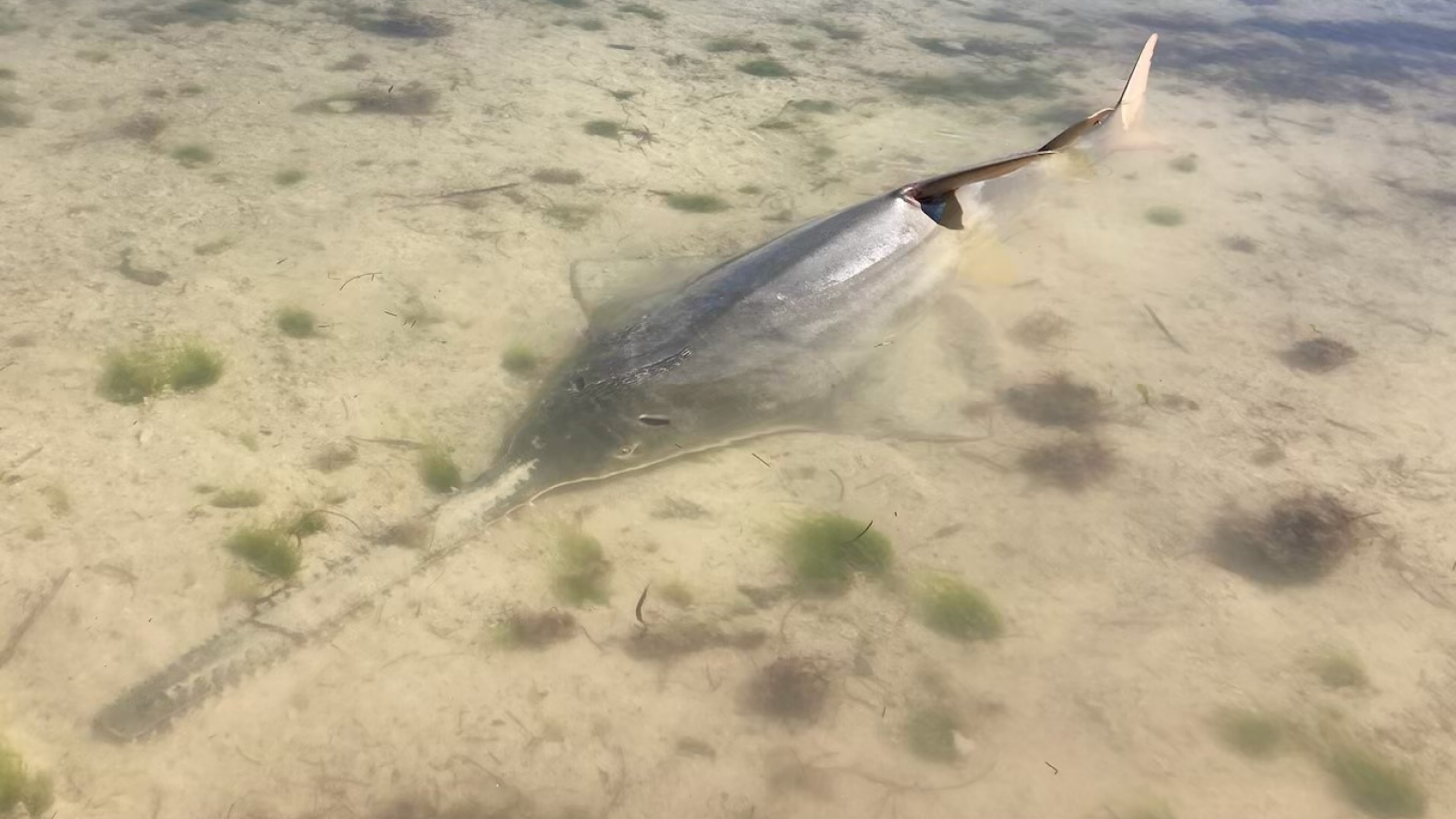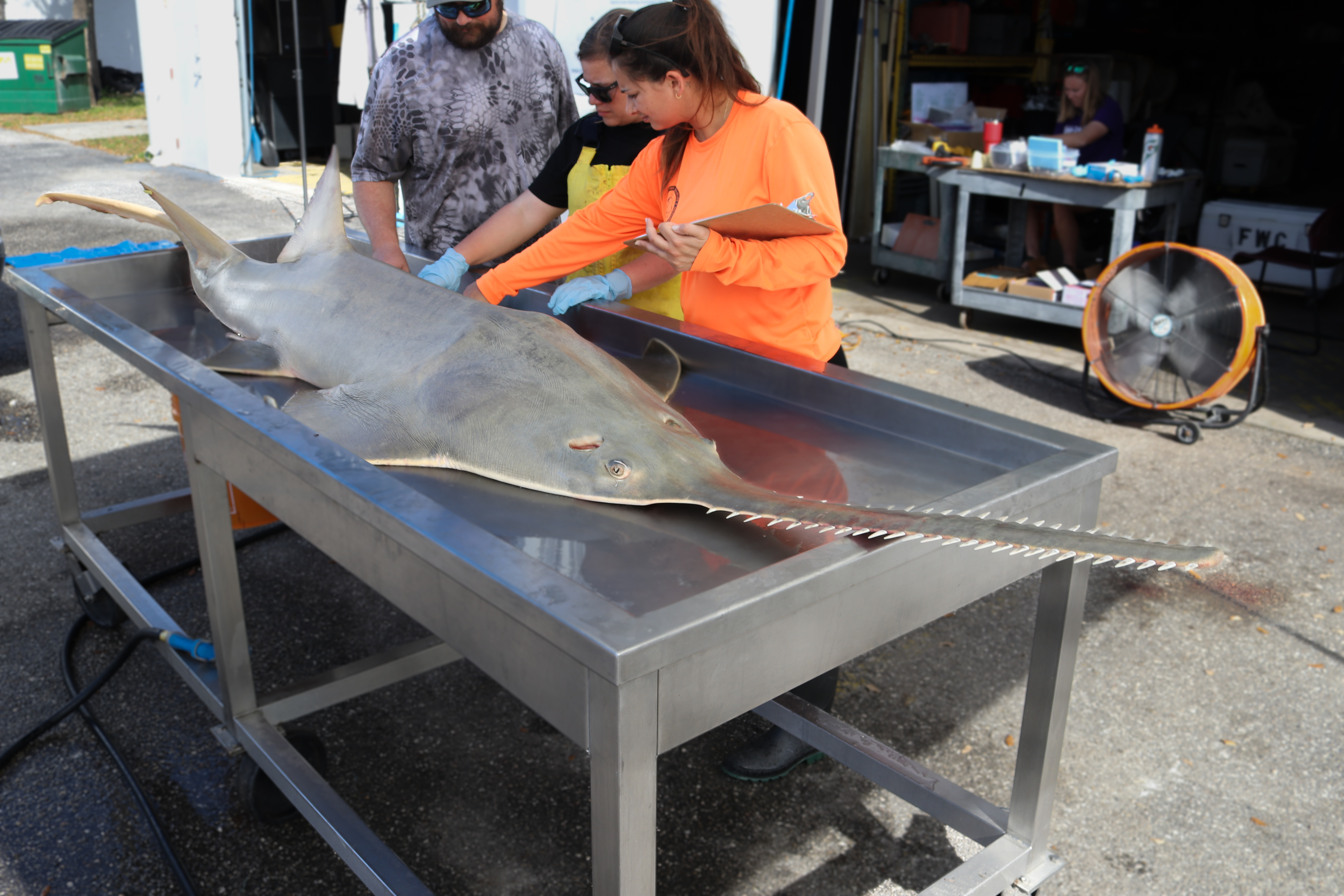
Experts in Florida are still struggling to understand why critically endangered smalltooth sawfish are swimming in circles and beaching themselves, despite testing hundreds of water samples and analyzing fish tissue.
"The cause, or causes, of the abnormal behavior and mortality of fish in the Florida Keys (prominently including sawfish) remain unknown," Theresa Cody, associate research scientist at Florida Fish and Wildlife Conservation Commission (FWC) Fish and Wildlife Research Institute, told Live Science in an email.
FWC has launched an intensive investigation, along with several partners, to understand what might be causing this strange behavior.
The mysterious behavior has caused the deaths of at least 50 smalltooth sawfish (Pristis pectinata) and is also affecting other species.
Initial reports of smalltooth sawfish behaving in an unusual way began in fall 2023. The fish appeared to be acting erratically and spinning in circles. FWC started receiving reports of dead fish in January 2024 and believes the two might be related. Smalltooth sawfish were declared critically endangered in 2006, and it’s believed that 80% of populations have been lost in under 60 years, so every death could have a significant impact on the species’ survival.

The Florida Department of Environmental Protection (DEP) has tested the water for more than 250 different chemicals, but they revealed that none of the chemicals are at high enough levels to cause these deaths, according to a May 22 statement.
"We started with examining environmental conditions, water quality, water samples for Harmful Algal Blooms (HABs), and toxin analysis," Cody said. There is no indication that the die-off is down to red tide (Karenia brevis) algal blooms, according to tests so far — though investigations are still ongoing.
"FWC and partners continue to investigate the potential role of HABs and associated algal toxins," Cody said.
Oxygen levels, salinity, pH, and temperature are also not believed to be the cause, and there have been no signs to suggest a bacterial infection or transmissible pathogen, according to the statement.
Researchers are also analyzing water and sediment samples for heavy metals, the results of which are pending.
So far, 12 smalltooth sawfish tissue samples have been sent to the University of South Alabama for toxin analysis along with blood samples and nearly 300 tissue samples from other fish.

"We collected fish samples for necropsy to determine if we thought there was a possibility of infectious disease or parasites. This included the collection of tissues for histopathology, which may show changes at the cellular level," Cody said. Tissue analysis is ongoing.
FWC has received nearly 500 messages from partners and members of the public about the mass mortality event since November 2023, but new reports have started to subside.
"It is difficult to know whether the event is beginning to end, or if the reports coming in are fewer because the public knows an investigation is ongoing and assumes there is no longer a need to submit a report," Cody said.
She stresses how important it is for members of the public to report all sightings so FWC can continue to monitor the event and get to the bottom of this mystery. "Even though spinning fish and mortality may cease, research will continue," she said.







